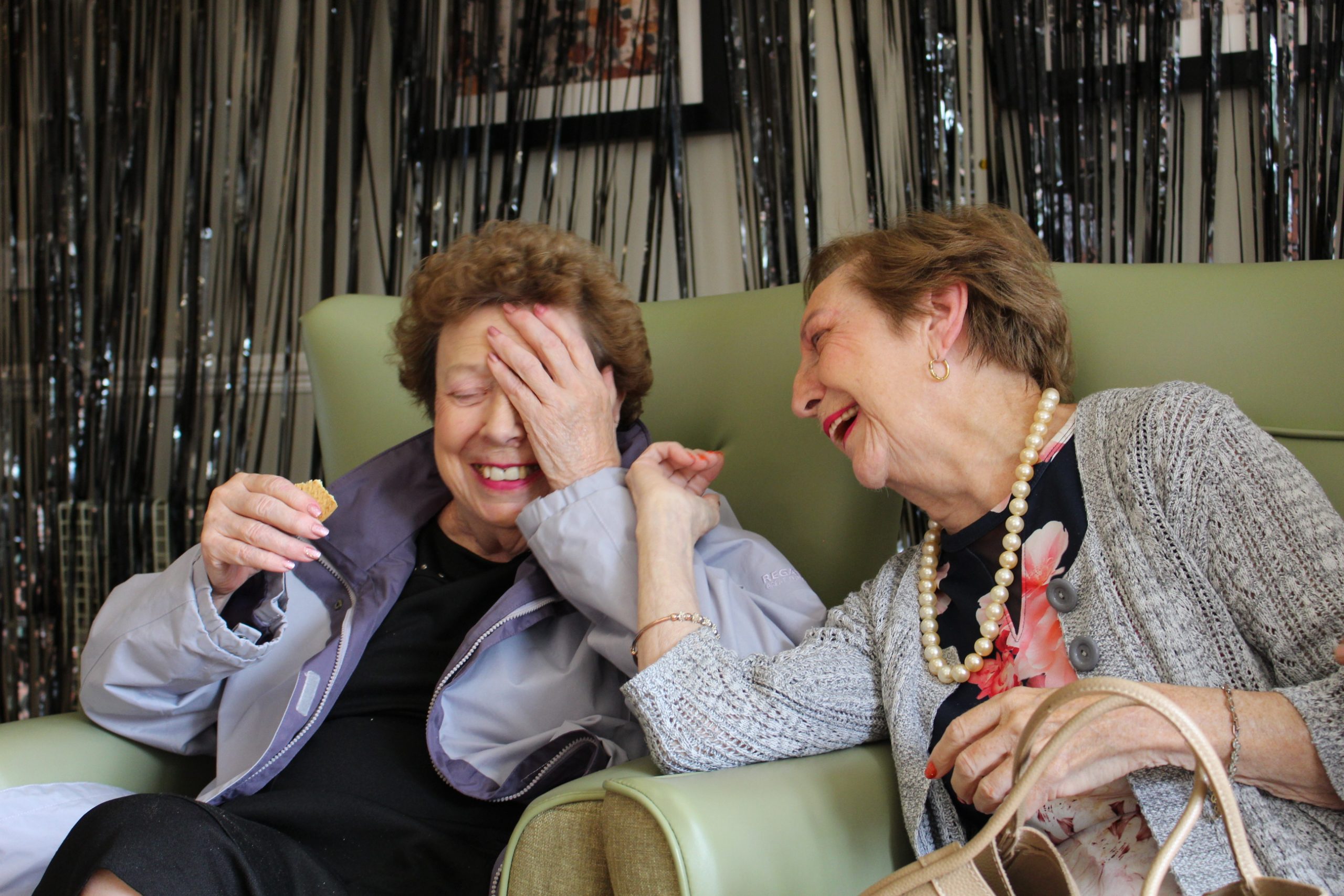Did you know that approximately 50 million people worldwide are living with dementia? This staggering statistic highlights the importance of understanding and supporting residents with memory loss in dementia care.
In this article, we will delve into the various types of dementia and how they impact memory loss, as well as explore strategies for creating a safe and nurturing environment for residents. By gaining a deeper understanding of the causes and progression of dementia, we can better comprehend the behavioural changes and triggers that may arise. Ultimately, our goal is to provide support that promotes independence and dignity for residents with memory loss.
Dementia is a complex condition that affects individuals in different ways, resulting in a decline in cognitive abilities such as memory, thinking, and reasoning. It can be caused by various diseases or conditions, including Alzheimer’s disease, vascular dementia, Lewy body dementia, and frontotemporal disorders. Each type of dementia presents unique challenges when it comes to memory loss. Understanding these differences is crucial for tailoring care plans to meet individual needs effectively.
Creating a safe and nurturing environment for residents with memory loss is essential in promoting their well-being. Simple modifications like clear signage, colour-coded cues, and uncluttered spaces can help reduce confusion while enabling residents to navigate their surroundings more independently. Additionally, providing familiar objects or personal mementoes can evoke memories and create a sense of comfort.
By implementing these strategies alongside other person-centered approaches such as individualized care plans and meaningful activities tailored to each resident’s preferences, we can enhance their quality of life while preserving their dignity despite the challenges posed by memory loss in dementia care.
Types of Dementia and Their Impact on Memory Loss
Let’s dive into the different types of dementia and how they affect memory loss! Dementia is a broad term that encompasses several conditions, each with its unique characteristics.
Alzheimer’s disease is the most common type of dementia and it gradually impairs memory, thinking, and behavior. People with Alzheimer’s often struggle to remember recent events or conversations, have difficulty finding the right words, and may become disoriented in familiar surroundings.
Vascular dementia, on the other hand, typically occurs after a stroke or other blood vessel problems in the brain. This type of dementia can cause difficulties with memory recall as well as problems with attention and language.
Another form of dementia is Lewy body dementia, which affects both thinking abilities and motor control. Memory loss may not be as prominent initially but tends to worsen over time.
Additionally, frontotemporal disorders lead to changes in personality and behaviour rather than primarily affecting memory.
Understanding these different types of dementia helps us tailor our approach to caring for individuals who are experiencing memory loss.
Creating a safe and nurturing environment for residents is crucial when providing care for those with dementia. By establishing routines and minimizing environmental distractions or hazards, we can help reduce confusion or anxiety that individuals may experience due to their memory loss.
Implementing strategies such as visual cues or labelling can assist residents in locating important items or navigating their surroundings more independently.
Now that we’ve explored how different types of dementia impact memory loss, let’s move on to understanding how we can support residents by creating an environment that promotes their overall well-being without overwhelming them with unnecessary stimuli.
Creating a Safe and Nurturing Environment for Residents
Imagine a world where every step you take is filled with hidden dangers, offering an exciting adventure for those brave enough to navigate the treacherous terrain. This is the reality for residents with dementia, as their memory loss makes it difficult for them to recognize potential hazards and stay safe.
As a caregiver, it’s crucial to create a safe and nurturing environment that minimizes risks and supports their well-being. One of the first steps in creating such an environment is ensuring that the physical space is properly designed. Remove any unnecessary clutter or furniture that may obstruct their movement or cause accidents. Install handrails along hallways and grab bars in bathrooms to provide stability and prevent falls. Additionally, make sure that lighting is adequate throughout the facility, as poor visibility can lead to confusion and disorientation.
Transitioning into the subsequent section about understanding the causes and progression of dementia, it’s important to note that by creating a safe and nurturing environment for residents with memory loss, we’re not only protecting them from harm but also providing them with a sense of security and stability. Understanding the causes and progression of dementia will further guide us in developing effective strategies to support these individuals on their challenging journey.
Understanding the Causes and Progression of Dementia
Discover the fascinating journey of dementia as it unravels the intricate workings of your loved one’s mind. Dementia is a progressive neurological disorder that affects memory, thinking, and behaviour. It’s caused by damage to brain cells, which disrupts the normal functioning of the brain.
The most common cause of dementia is Alzheimer’s disease, accounting for about 60-80% of cases. Other causes include vascular dementia, frontotemporal dementia, and Lewy body dementia.
As dementia progresses, it leads to a decline in cognitive abilities and eventually affects daily functioning. Memory loss is often one of the first symptoms experienced by individuals with dementia. They may have difficulty remembering recent events or conversations, while memories from the past may remain more intact. Alongside memory loss, individuals may also struggle with language difficulties, problem-solving skills, and changes in mood or behaviour.
Understanding the causes and progression of dementia is crucial in providing effective care and support for individuals living with this condition. By recognizing these changes early on, you can adapt your approach to communication and activities that cater to their needs.
In the next section on ‘behavioural changes and triggers in dementia,’ we will explore how these cognitive impairments can manifest through specific behaviours and what strategies you can employ to manage them effectively without causing distress.
Behavioural Changes and Triggers in Dementia
As dementia progresses, you may notice that individuals experience changes in their behaviour. These behavioural changes can vary from person to person and may include agitation, aggression, wandering, or withdrawal. It is important to understand that these behaviours aren’t intentional but rather a result of the changes happening in the brain.
Certain triggers can exacerbate these symptoms, and it’s crucial to identify and manage them effectively. Common triggers include loud noises, unfamiliar environments, lack of routine or structure, fatigue or hunger, and overstimulation. By recognizing these triggers, you can create a supportive environment that minimizes distress for individuals with dementia.
This can involve creating a calm and familiar space, establishing daily routines and schedules, providing meaningful activities tailored to their interests and abilities, ensuring they have regular meals and rest breaks, and reducing excessive noise or stimulation.
Transitioning into the subsequent section about supporting independence and dignity for residents with memory loss: Understanding behavioural changes and triggers is just one aspect of providing effective care for individuals with dementia. Supporting their independence and preserving their dignity are equally important components in enhancing their quality of life.
Supporting Independence and Dignity for Residents with Memory Loss
Preserving the autonomy and self-worth of individuals living with cognitive decline becomes essential to fostering their sense of independence and dignity. It is important to create an environment that allows residents with memory loss to continue engaging in activities they enjoy, while also assisting when needed.
This can be achieved by offering choices and promoting decision-making, as well as adapting tasks and routines to match their abilities.
Supporting independence involves empowering residents to participate in daily tasks to the best of their ability. For example, instead of doing everything for them, encourage them to dress themselves or assist with simple household chores. By maintaining a level of independence, residents can retain a sense of purpose and accomplishment.
Additionally, it is crucial to treat individuals with respect and dignity throughout all interactions. Avoid talking down or belittling them; instead, use clear communication techniques such as speaking slowly and using visual cues when necessary.
By understanding the unique needs and challenges faced by individuals with memory loss, caregivers can provide support that promotes independence and preserves dignity. It is vital to remember that while they may require assistance in certain areas, these individuals still have the capacity for meaningful engagement in their lives.
By fostering autonomy and treating them with respect, we can help residents maintain their sense of self-worth despite cognitive decline.
Frequently Asked Questions
What are some common medications used to treat dementia and memory loss?
Common medications used to treat dementia and memory loss include cholinesterase inhibitors, such as donepezil, rivastigmine, and galantamine. These drugs enhance brain activity and can temporarily improve cognitive function in some individuals with dementia.
How can family members and caregivers effectively communicate with residents with dementia?
To effectively communicate with residents with dementia, use simple and clear language. Maintain eye contact and speak slowly. Use nonverbal cues like facial expressions and gestures, and be patient and understanding.
Are there any alternative therapies or activities that can help improve memory and cognitive function in residents with dementia?
Engaging in alternative therapies and activities can potentially improve memory and cognitive function in residents with dementia. Examples include music therapy, art therapy, reminiscence therapy, and physical exercise.
What are some strategies for managing challenging behaviours, such as aggression or wandering, in residents with dementia?
To manage challenging behaviours in residents with dementia, try using a gentle touch. Like a soothing balm on troubled skin, your calm presence and compassion can help ease aggression or wandering tendencies.
Are there any specific dietary recommendations or nutritional supplements that can support brain health in individuals with dementia?
There is no specific dietary recommendation or nutritional supplement that can guarantee brain health in individuals with dementia. However, a balanced diet rich in fruits, vegetables, whole grains, and lean proteins can support overall health and well-being.
Conclusion
In conclusion, caring for residents with dementia requires a deep understanding and compassionate approach. By recognizing the different types of dementia and their impact on memory loss, caregivers can tailor their support to meet the specific needs of each individual.
Creating a safe and nurturing environment is crucial, as it provides a sense of security and familiarity that promotes well-being.
Just as a lighthouse guides ships through treacherous waters, caregivers must be the guiding light for residents with memory loss. They must shine brightly, illuminating the path ahead and offering reassurance in times of confusion.
Understanding the causes and progression of dementia allows caregivers to navigate these uncharted waters with empathy and patience.
It is important to remember that behavioural changes in individuals with dementia are often triggered by external factors. Like an orchestra conductor who knows how to read the mood of their musicians, caregivers must be attuned to their residents’ cues and respond accordingly. By addressing triggers proactively, they can help prevent distressing episodes and promote a calm atmosphere.
Supporting independence is vital in preserving the dignity of residents with memory loss. Just as an eagle soars freely through the sky, individuals should be encouraged to maintain control over their lives as much as possible. This may involve adapting activities or providing assistance when needed but always allowing autonomy whenever feasible.
As we conclude this journey into understanding dementia care, let us remember that our role as caregivers is not only about providing physical assistance but also about fostering emotional connection and promoting quality of life. By embracing symbolism like a painter uses colours on a canvas, we can create vibrant portraits that capture the essence of each resident’s unique journey through memory loss.
Through knowledge, compassion, and unwavering dedication, we can provide meaningful support for those living with dementia. Like gardeners tending to delicate flowers in bloom, let us nurture these precious souls, helping them flourish even amidst challenging circumstances.
Together, we can make a difference in their lives – one memory, one smile at a time.




